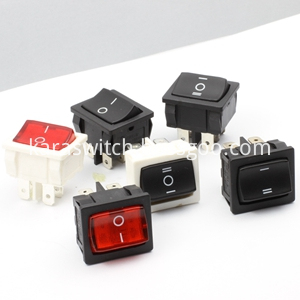WiFi wireless technology Speaking of wireless networks, everyone has a plausible feeling. Is wireless simply connecting two computers? No! This is already the wireless concept of the last century. A new generation of wireless network will establish a new feeling of wireless LAN without the need for wiring and relative freedom of use. Demand determines the development of the market. It is rare to see which IT technology or product has such a rapid growth momentum. It is no longer a dream to access the Internet anytime and anywhere without any restrictions. Among them, WiFi has played a vital role. The role. Wi-Fi stands for "wireless fidelity" and refers to a subset of the fully compatible 802.11 standard IEEE802.11b, which uses open 2.4GHz direct sequence spread spectrum with a maximum data transfer rate of 11Mbps, which can also be changed according to signal strength The transmission rate is adjusted to 5.5Mbps, 2Mbps and 1Mbps bandwidth. The transmission range without straight line transmission is 300 meters outdoors and 100 meters when there are obstacles indoors. It is the most widely used transmission protocol. Compared with the wired network, it has many advantages: No wiring The main advantage of WiFi is that it does not require wiring and is not restricted by wiring conditions, so it is very suitable for the needs of mobile office users and has a broad market prospect. At present, it has expanded from special industries such as traditional healthcare, inventory control and management services to more industries, and even started to enter the fields of families and educational institutions. health and safety The transmission power specified by IEEE802.11 cannot exceed 100 milliwatts, and the actual transmission power is about 60 to 70 milliwatts. What kind of concept is this? The transmission power of the mobile phone is about 200 milliwatts to 1 watt, the handheld walkie-talkie is up to 5 watts, and the wireless network is not used in the same way as the mobile phone directly contacts the human body, it should be absolutely safe. Simple method of formation Generally, the basic equipment for setting up a wireless network is a wireless network card and an AP. In this way, it can share network resources in a wireless mode with the existing wired architecture, and the installation cost and complex procedures are much lower than the traditional wired network. If it is only a peer-to-peer network of several computers, APs are also unnecessary, and only each computer needs to be equipped with a wireless network card. AP is short for AccessPoint, generally translated as "wireless access node", or "bridge". It mainly acts as a bridge between wireless workstations and wired LAN in the media access control layer MAC. With an AP, just like a Hub on a wired network, a wireless workstation can be quickly and easily connected to the network. Especially for the use of broadband, WiFi has more advantages. After wired broadband network (ADSL, residential LAN, etc.) arrives at home, connect to an AP, and then install a wireless network card in the computer. Ordinary households have enough APs. Even if the user's neighborhood is authorized, they can share the Internet without adding ports. Work long distance Don't look at the working distance of wireless WIFI. Under the condition of complete network construction, the real working distance of 802.11b can reach more than 100 meters, and solve the problem of data correction and error codes during high-speed movement. , Handover and safety certification between equipment and base station have been well resolved. The development and future of WiFi In the past two years, the number of wireless APs has grown rapidly, and the convenience and efficiency of wireless networks have enabled them to gain rapid popularity. In addition to having APs in some public places, there are precedents abroad for building metropolitan area networks with wireless standards. Therefore, the wireless status of WiFi will become increasingly strong. WiFi is currently the mainstream standard for wireless access, but how far will WiFi go? With the strong support of Intel, WiFi already has a successor. It is WiMAX that is fully compatible with existing WiFi. Compared to WiFi's 802.11X standard, WiMAX is 802.16x. Compared with the former, WiMAX has a longer transmission distance, wider frequency band selection and higher access speed, etc. It is expected to become a mainstream standard for wireless networks in the next few years, and Intel plans to adopt this standard for construction in the future Wireless wide area network. This is a qualitative change compared to the current wireless local area network or metropolitan area network, and the existing equipment can still be supported to protect people's every penny of investment. All in all, the demand for mobile connectivity in home and small office network users is the driving force for the growth of the wireless LAN market. Although the developed countries such as the United States and Japan are still the regions with the most WiFi users so far, with e-commerce and mobile office With further popularity, cheap WiFi will surely become an inevitable choice for users who need to connect to the Internet at any time.
Kara offers a wide range of illuminated and non-illuminated Rocker Switches.Ranging from 1 to 6 poles,4VA to 30 amp,with many styles of colors and functions,especially the switches with High-Current used very widely in the welding machines. Certifications include UL, CSA, TUV, CE, and more. Kara Rocker Switches include the KR1-Series abd KR2- Series based on different size of the panel cut-out.
Rocker Switch,Waterproof Rocker Switch,Rocker Switch 3 Pin,Rocker Switch 4 Pin Ningbo Kara Electronic Co.,Ltd. , https://www.kara-switch.com